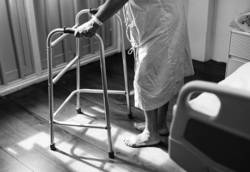
Elderly residents of nursing home and individuals with immune systems are compromised are at considerable risk of contracting staph infections. Even with prompt and thorough treatment, nearly 1 in every 6 patients who contract a staph infection suffer fatal consequences. When negligent care and inadequate treatment cause a fatality, surviving family members can pursue compensation for their loss.
Understanding Staphylococcus Aureus
Staphylococcus aureus is a germ that is found on the skin. If it is introduced into the bloodstream either through a break in the skin such as an abscess or cut or via injection, it can cause sepsis or death. While it can be treated with a strong course of antibiotics, new strains of staph have evolved. In particular, methicillin-resistant staph which is able to resist penicillin-based methicillin or staphcillin. As of 2017, approximately 60% of staph infections were MRSA. This is a significant and alarming rise over the 2% recorded in 1974 and highlights how quickly bacteria are becoming resistant to the antibiotic arsenal at the disposal of healthcare providers.
Hospitals and nursing homes are ideal breeding grounds for MRSA and MSSA infections. The conditions within hospitals and nursing homes mean that there are plenty of opportunities for patients to suffer exposure. Moreover, the bacteria is easily spread to individuals with weakened immune systems who are highly susceptible to acquired infections. These include individuals who have diabetes, cancer, heart disease, lung disease, and those in otherwise good health but currently recovering from surgical procedures.
Staph Infection Statistics
In 2017, more than 119,000 staph infections were recorded in the United States. Of these, approximately 20,000 individuals succumbed to the infection and passed away. Staph infections cause potentially fatal skin infections, blood infections including bacteremia and sepsis, pneumonia, endocarditis infections within the heart, osteomyelitis infection within bones, and other complications.
Rapid tests are available that can detect the presence of a staph infection within hours of potential exposure with a 99% accuracy rate. These tests can determine whether the individual is infected with an MRSA or MSSA strain of staph. These simple tests make it possible for physicians to quickly ascertain the type of infection and prescribe an appropriate course of treatment. With proper treatment, care for these bacterial infections can take between 7 days to two weeks and add approximately $20,000 in costs to the individual’s treatment bill. Annually in the United States, the cost of treatment for patients with MRSA infections is more than $2.5 billion.
The Importance of Adhering to Protocols
Hospitals, surgical centers, nursing homes, and other facilities charged with the care and treatment of the sick and elderly are well-advised of the risk of MRSA/MSSA infections. Awareness campaigns over the past decade have highlighted the dangers within these facilities and all staff and personnel are required to adhere to strict sterilization and disinfection procedures and protocols to prevent these infections from occurring.
Staph infections are easily transmissible. They can be transmitted via shared towels and personal hygiene tools including toothbrushes and razors. They can be transmitted through IV lines, scalpels, and other surgical instruments. The ease of transmission highlights the importance of protocols and procedures designed to prevent the spread of infection.
Many cases of MRSA/MSSA infections are traced back to one or more individuals who fail to adhere to the strict infection control protocols that are put in place to protect patients. These include thorough hand washing, proper disinfection of surfaces including handrails, bed rails, tabletops, counters, sinks, etc. Failure to adhere to these protocols places patients at risk of contracting an infection and potentially passing that infection on to other individuals whom they come into contact with.
Liability for MRSA/MSSA Infections
Doctors, nurses, and others responsible for providing care to surgical patients, nursing home residents, etc., have a duty of care that requires them to protect patients from known risks including the acquisition of bacterial infections. In order to prevail in a lawsuit against a health care provider or nursing home facility, the plaintiff must demonstrate that the responsible party acted negligently in the care and services they provided. For example, if the facility failed to properly train staff in infection control procedures. Another example would be if the facility failed to correct known deficiencies such as not fixing inadequate ventilation systems or repairing/replacing faulty sterilization equipment.
Patients who survive their infection or their surviving family members and pursue claims to cover the cost of medical bills stemming from treatment of the infection and lost wages for missed work while recovering from the infection. They may also seek compensation for pain and suffering, emotional distress, and in some cases, punitive damages designed to deter a recurrence of the behaviors that caused the infection.

